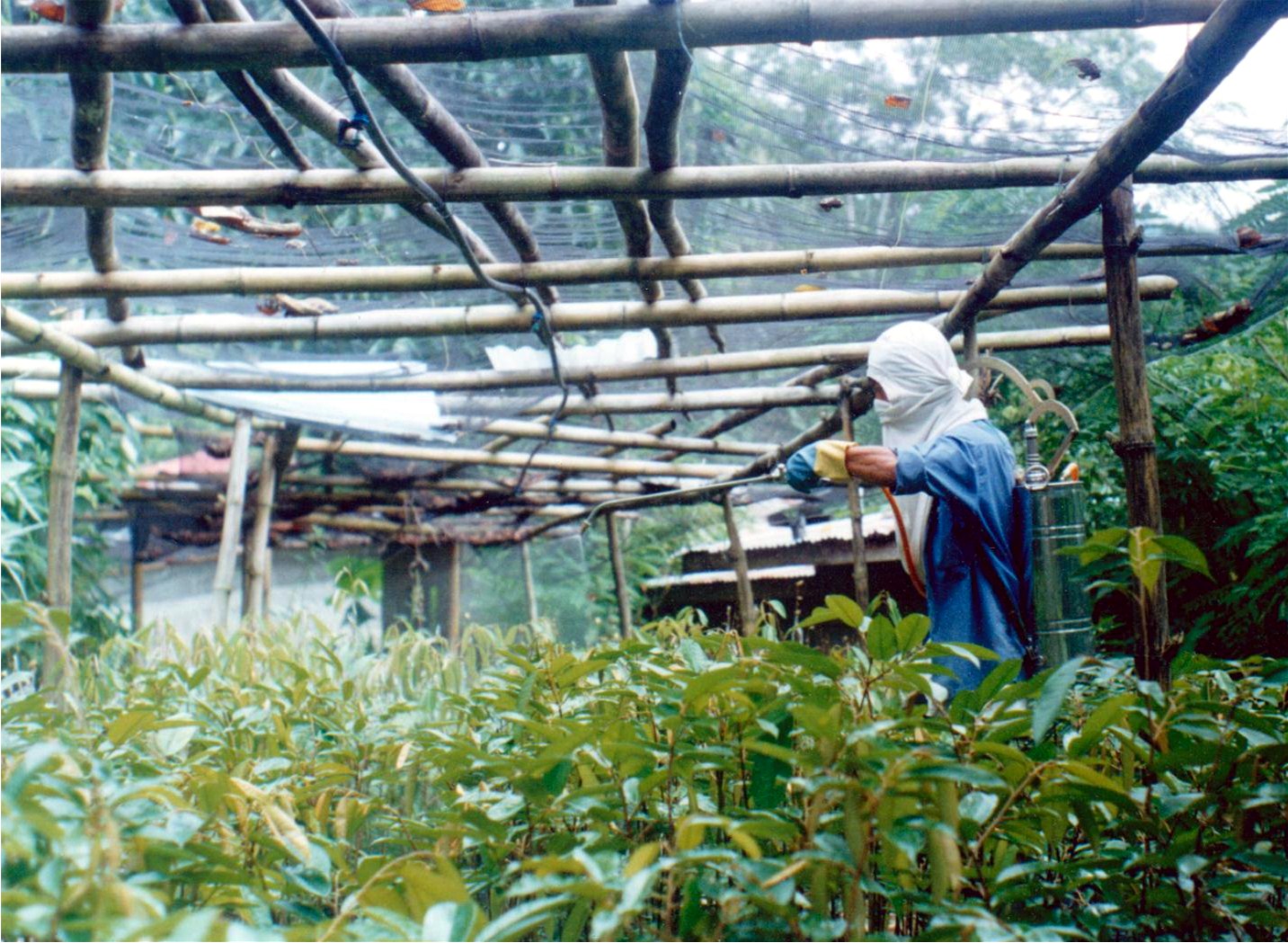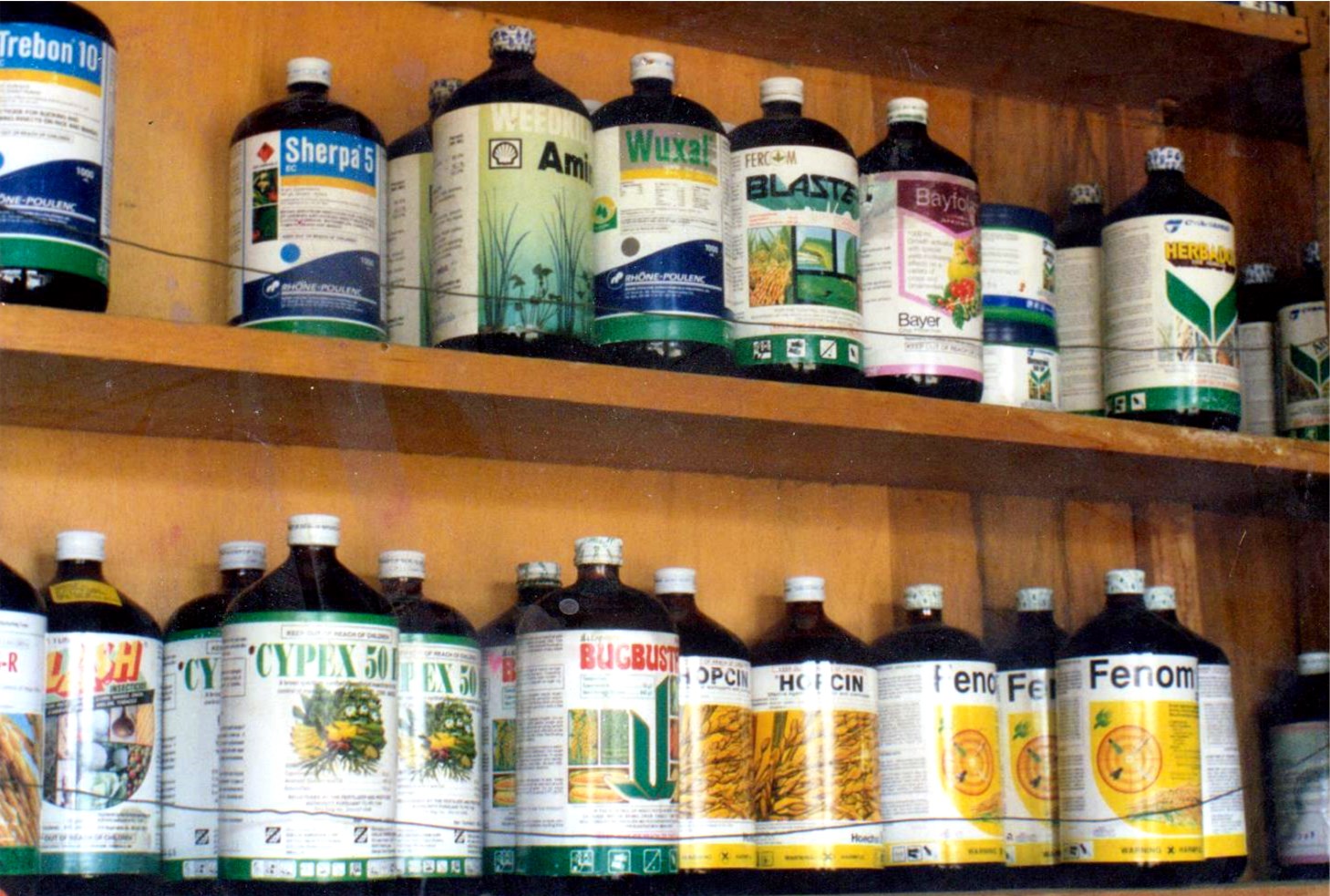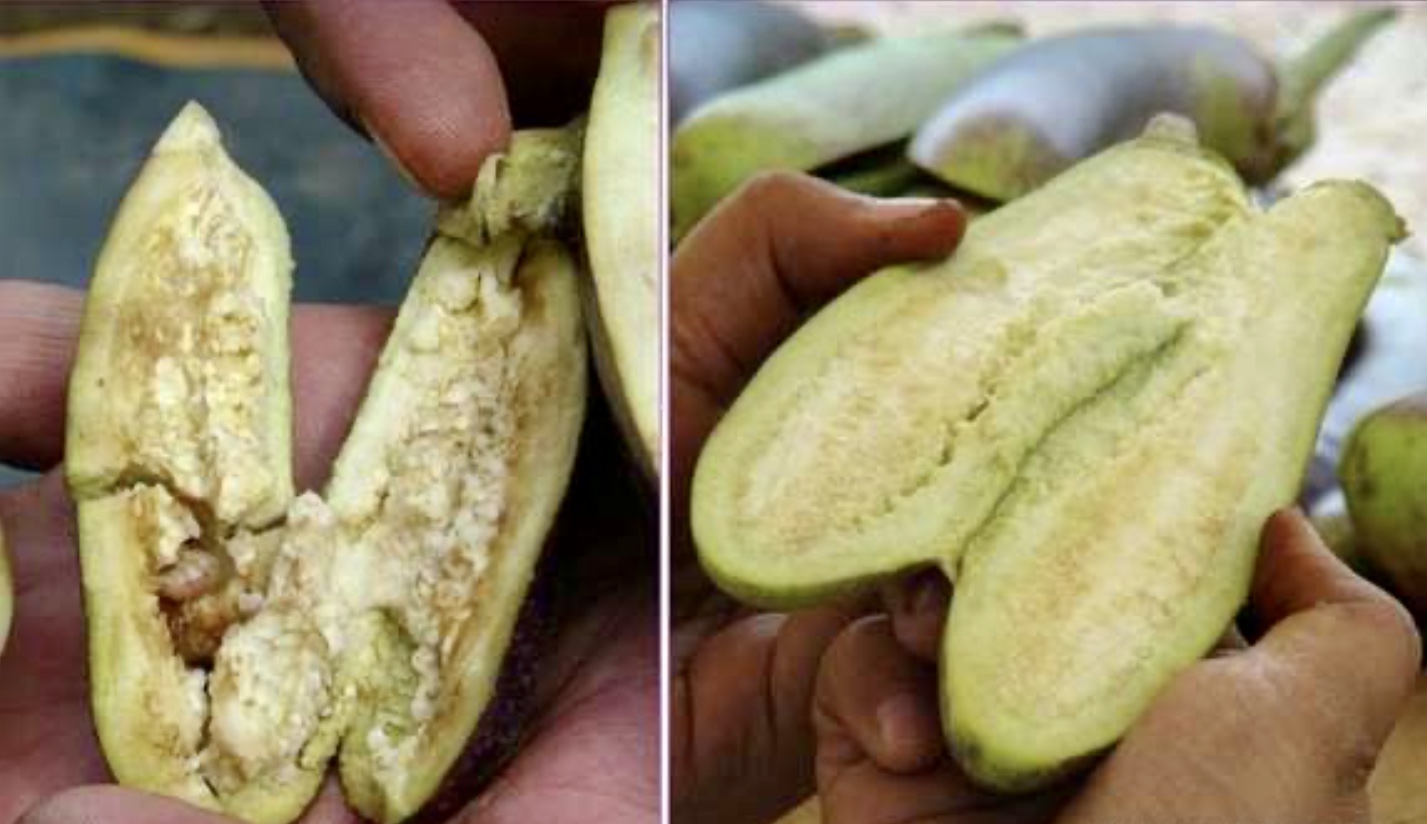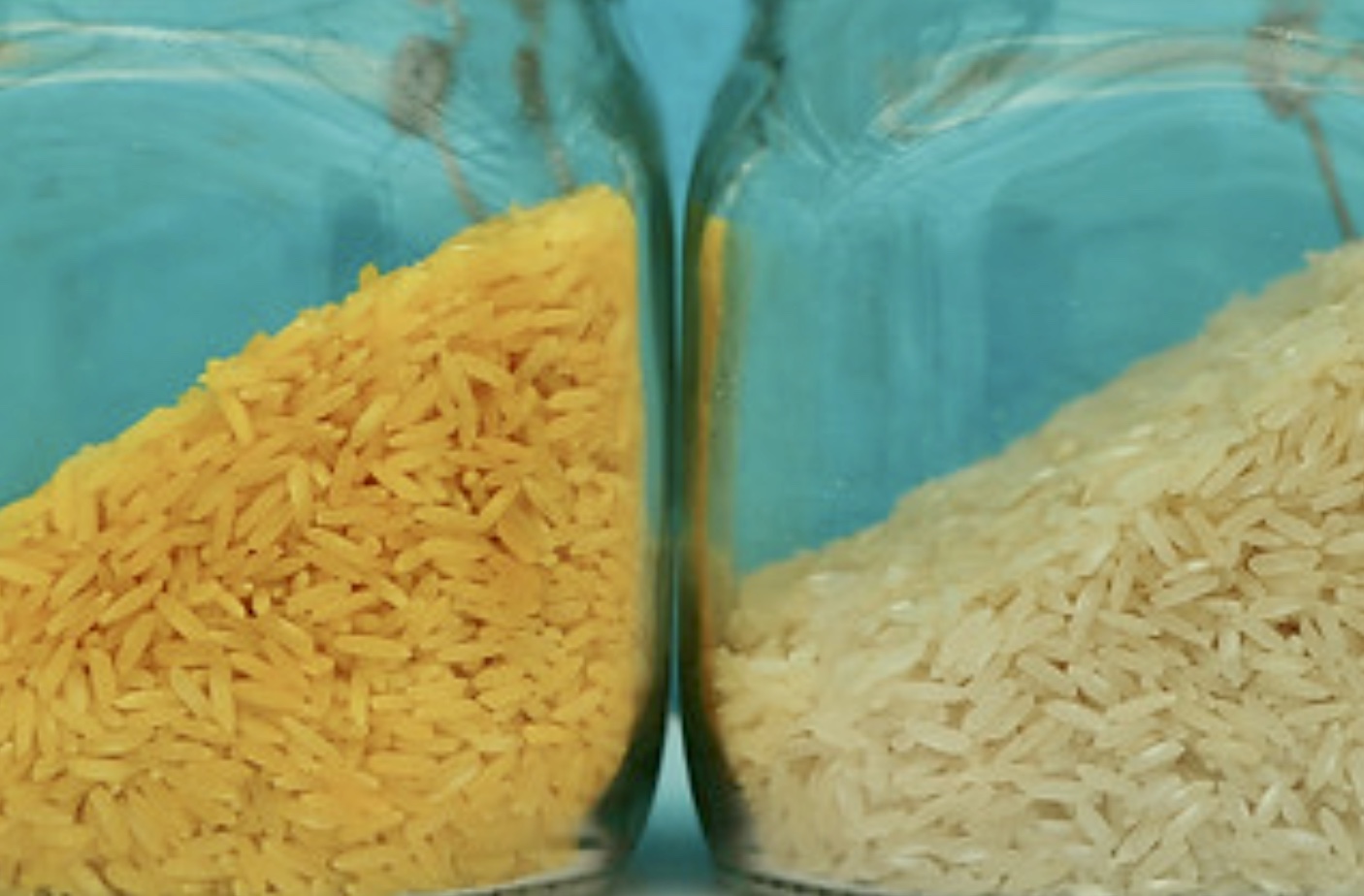Text and Photos by Henrylito D. Tacio
Additional Photos from IRRI and ISAAA
“…Long before the age of man, insects inhabited the earth – a group of extraordinarily varied and adaptable beings. Over the course of time since man’s advent, a small percentage of more than half a million species of insects have come into conflict with human welfare…” – RacheL Carson (1962)
***
Chemicals that kill pests and unwanted weeds are getting the attention of the media these days.
“Ban entire pesticide class to protect children’s health,” The Guardian headlines!
“Exposure to organophosphates increases the risk of reducing IQs, memory and attention deficits, and autism for prenatal children,” writes Arthur Neslen, quoting a paper that was published in Plos Medicine.
“Popular oat cereals, oatmeal, granola and snack bars come with a hefty dose of the weed-killing poison in Roundup,” another news report said.
For one, those commonly-used herbicides can make bacteria develop antibiotic resistance significantly faster, according to a feature published by Newsweek.
“Herbicides are among the most widely used and dispersed manufactured products on Earth,” Jack Heinemann, professor at the University of Canterbury, told Newsweek. “Some form of exposure for people, pets, and livestock can be routinely expected.
On the other hand, “antibiotics are used at high rates particularly on people, pets and livestock. Therefore, the combination of exposures for bacteria that live on us is all but guaranteed.”
Globally, at least three million people are poisoned by pesticides every year, of whom 20,000 people die. That’s according to the Geneva-based World Health Organization (WHO).
The Fertilizer and Pesticide Authority (FPA) defines a pesticide as “any substance or mixture of substances intended for preventing, destroying, repelling, or mitigating any insects, rodents, nematodes, fungi or weeds, or any other form of life declared to be pest.”
Pesticide also refers to “any substance or mixture of substances intended for use as a plant regulator, defoliant, or desiccant.”


Worldwatch Institute, based in Washington, D.C., said that the first records of pesticides come from the ancient Greeks. Pliny the Elder compiled a list of common compounds like arsenic, sulfur, caustic soda, and olive oil used to protect crops. The Chinese later recorded using similar substances to combat insects and fungi. In the 19th century, European farmers commenced using heavy metals like copper sulfate and iron sulfate to fight weeds.
For a long time, no one seemed to question the safety of pesticides. Not until 1962, when marine biologist Rachel Carlson wrote the now-classic Silent Spring. In her book, she described how pesticides cause long-term hazards to birds, fish, other wildlife, and humans but provides only short-term gains in controlling the pests.
“Pesticides are like bombs being dropped in the food web creating enormous destruction,” deplores entomologist Dr. K.L. Heong, who used to work at the International Rice Research Institute (IRRI) in Los Baños, Laguna.
Unknowingly, pesticides are killing more than just pests. “Some pesticides harm the living organisms other than the targeted pest,” the Davao-based Technical Assistance Center for the Development of Rural and Urban Poor (TACDRUP) observes. “Some (pesticides) travel to the food chain to bioaccumulate in higher organisms.”
Gretta Goldenman and Sarojini Rengam explain in their book, Pesticides and You that pesticides are concentrated even to toxic levels via the food chain. Thus, an increased feeding on plants sprayed with pesticides might be eaten by another insect which might be eaten by a bird.
“Traces of pesticides too small to kill the targeted pest can accumulate to levels high enough to harm species further on up the food chain,” the two authors warned.
Pesticides are also hazardous to human beings. They can enter the human body through the mouth, lungs, digestive system, or skin, according to health experts. Depending on the pesticide, health effects can be immediate (acute), or they can occur after years of low-level exposure.
Acute poisoning generally occurs after an accident on the skin or drinking a bottle of pesticides. Medical doctors say the symptoms of acute poisoning occur within 24 hours: vomiting, headache, respiratory problems, heart failure, etc.
Long-term effects of pesticides include skin disorders, damage to internal organs (liver, kidneys, lungs), increased sensitivity to pesticides, and effects on the progeny, according to medical experts.
Despite the health and environmental risks, farmers are still hooked on many of the worst offenders. Without pesticides, they claim, their costs would skyrocket, harvests would plummet, and more people would go hungry. It is widely assumed that for big harvests, pesticides are essential.
Filipino farmers, however, need not to use pesticides – whether natural or synthetic – to get rid of those pesky pests. One good way to avoid using pesticides is by relying on Bacillus thuringiensis (Bt) to do the work. Bt is a common soil bacterium so-called because it was first isolated in the Thuringia region of Germany. It produces a protein that paralyzes the larvae of some harmful insects.
Scientists, through genetic engineering, have taken the Bt gene responsible for the production of the insecticidal protein from the bacterium and incorporated it into the genome of plants. As such, the plants have a built-in mechanism of protection against targeted pests.
Among the crops where Bt is introduced include corn, cotton, poplar, potato, rice, soybean, tomato, and, more recently, eggplant. “The protein produced by the plants does not get washed away, nor is it destroyed by sunlight,” said a briefing paper published by the Global Knowledge Center on Crop Biotechnology. “The plants are protected from the insects round the clock regardless of the situation.”


Since Bt crops are able to defend themselves against pests, the use of chemical insecticides is significantly reduced.
“Aside from being effective against insect pests, Bt crops have lower incidences of opportunistic microbial pathogens, such as the fungus Fusarium,” the briefing paper said. “This fungus produces mycotoxins that can be deadly to livestock and also cause cancer in humans.”
The briefing paper shares this information on how Bt operates: “When ingested by larva of the target insect, the Bt protein is activated in the gut’s alkaline condition and punctures the mid-gut leaving the insect unable to eat. The insect dies within a few days.”
But there are some issues against Bt crops. Critics claim that Bt proteins could target predatory and other beneficial or harmless insects as well as the targeted pest. The University of California reported that the Bt proteins have been used as organic sprays for insect control in France since 1938 and the USA since 1958, with no ill effects on the environment reported.
“The specificity of Bt for its target insects is one of the characteristics that make it an ideal method of biological pest control,” the briefing paper explained. “The specificity rests on the fact that the toxicity of the Bt protein is receptor-mediated. This means that for an insect to be affected by the Bt protein, it must have specific receptor sites in its gut where the proteins can bind. Fortunately, humans and the majority of beneficial insects do not have these receptors.”
According to the Extension Toxicology Network (Extonet), a pesticide information project of several universities in the US, “no complaints were made after 18 humans ate one gram of commercial Bt preparation daily for five days, on alternate days… Humans also ate one gram per day for three consecutive days and were not poisoned or infected.”
On tests conducted on dogs, guinea pigs, rats, fish, frogs, salamanders, and birds, the Bt protein was found not to have any harmful effects. What was interesting about the study was that no toxic effects were found on beneficial or predator insects, such as honeybees and lady beetles, Extonet reports.

